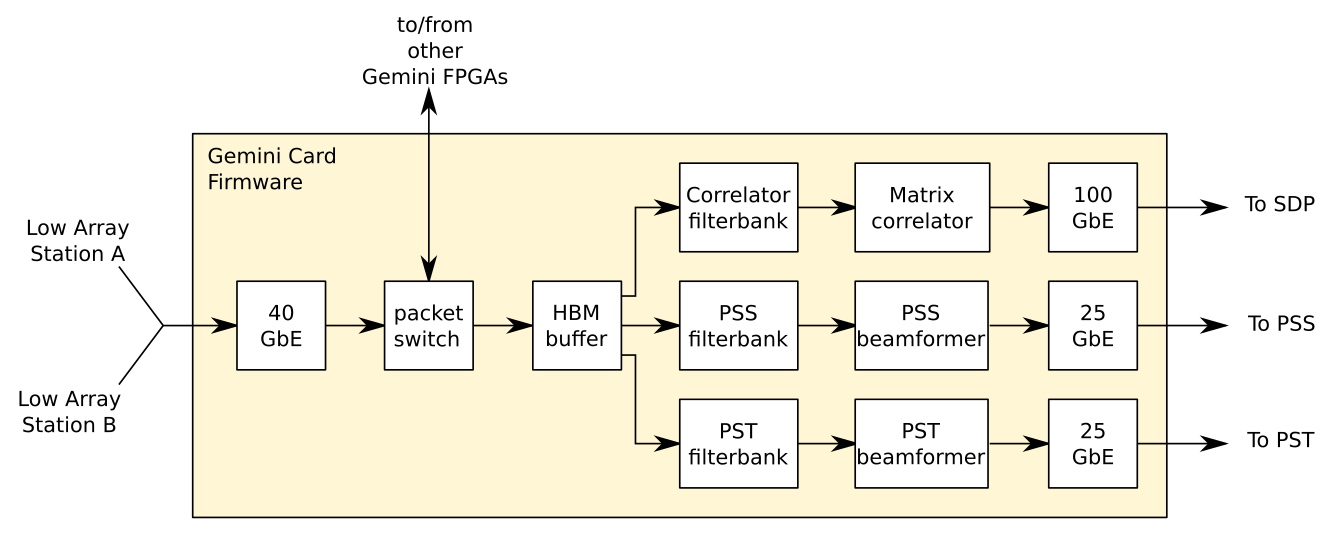Low CBF Firmware¶
Low CBF firmware consists of VHDL source code implementing filters, correlators and beamformers required for Low CBF, shown in highly simplified form in the following diagram

Hardware Platform¶
Low CBF firmware is intended to run on a Gemini Card which is based on a Xilinx XCVU37P FPGA. The Gemini card has several high-speed optical interfaces:
- 10GbE Monitoring and Control channel. The control plane of the Gemini card consists of 32-bit registers accessed via a UDP/IP based protocol (Gemini Protocol)
- 40GbE to receive digitised station data from the Low Array. Each station will send complex 8-bit dual-polarisation data for up to 384 Coarse Frequency channels. Channel centre frequencies will be spaced by 781.25 kHz but channel data will be over-sampled 32/27 i.e. have a sample period of 1080 nsec. With FPGAs receiving data from two stations, the data rate over the 40G link will be up to 23Gbps.
- 100GbE output to SDP (visibilities)
- 25GbE output to PSS
- 25GbE output to PST
A key feature of the FPGA is its High Bandwidth Memory (HBM). The HBM allows station data to be re-ordered for correlation. Station data is received as a time-based data stream and stored in the HBM. When a complete integration period is held in the HBM it is read out by frequency channel and a cross-correlation is performed for each frequency channel. Because the HBM is part of the FPGA rather than an external DIMM there is no need for power-hungry memory bus interfaces.
Firmware Design¶
Firmware capabilities will be developed in a number of increments
- AA0.5: 6 Stations, 3 Gemini Cards
- AA1: 24 Stations, 12 Gemini Cards
- AA2: 288 Stations, 144 Gemini Cards
- AA3: 512 Stations, 288 Gemini Cards (Full correlator, no PSS & PST)
- AA4: 512 Stations, 288 Gemini Cards (Full correlator, PSS & PST)
Design of the firmware blocks is described in detail here.
Building Firmware¶
RadioHDL is a software tool included in the repository that automates building registers in the firmware design and creating a Project File so that Xilinx Vivado HLx can compile the firmware to a bit file that can be loaded into and run on the FPGA. The process to use RadioHDL to build code is described on SKA Confluence.
Vivado is licensed software. Some of the IP included in the design, such as the high-speed optical interfaces, is also licensed software.